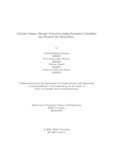| dc.contributor.advisor | Arif, Hossain | |
| dc.contributor.advisor | Mobin, Md. Iftekharul | |
| dc.contributor.author | Shawan, Naveed Rahman | |
| dc.contributor.author | Mehrab, Syed Samiul Alam | |
| dc.contributor.author | Ahmed, Fardeen | |
| dc.contributor.author | Hasmi, Mohammad Sharatul | |
| dc.date.accessioned | 2019-06-25T10:00:08Z | |
| dc.date.available | 2019-06-25T10:00:08Z | |
| dc.date.copyright | 2019 | |
| dc.date.issued | 2019 | |
| dc.identifier.other | ID 13201027 | |
| dc.identifier.other | ID 16101175 | |
| dc.identifier.other | ID 15101073 | |
| dc.identifier.other | ID 15101133 | |
| dc.identifier.uri | http://hdl.handle.net/10361/12255 | |
| dc.description | This thesis is submitted in partial fulfillment of the requirements for the degree of Bachelor of Science in Computer Science and Engineering, 2019. | en_US |
| dc.description | Cataloged from PDF version of thesis. | |
| dc.description | Includes bibliographical references (page 40). | |
| dc.description.abstract | Chronic kidney disease (CKD) is the gradual loss of kidney function over a duration of
months or years. One in ten people are affected by it at some stage. Some ethnicities such as
African Americans and South Asians are predisposed to having the disease. Globally the
number of people affected has been growing through the years, with 752.7 million having
the disease in 2016 The disease has no cure, so early detection is key to better manage the
disease and control other risk factors such as diabetes and blood pressure. Although CKD
has no early symptoms and requires medical tests on blood and/or urine samples, medical
tests conducted for other diseases hold clues to whether someone has CKD . The datasets
that are available have a multitude of features and are also incomplete and imbalanced. We
want to overcome this problems through feature engineering to reduce the number of features.
A comparative study of various classifiers needs to be done to find those that hold promise
and are robust enough to handle currently available datasets, which are both incomplete and
unbalanced. Our study is to bring down the number of attributes/features using recursive
feature elimination method and use Ensemble classifier to predict the existence of CKD from
the reduced features. | en_US |
| dc.description.statementofresponsibility | Naveed Rahman Shawan | |
| dc.description.statementofresponsibility | Syed Samiul Alam Mehrab | |
| dc.description.statementofresponsibility | Fardeen Ahmed | |
| dc.description.statementofresponsibility | Mohammad Sharatul Hasmi | |
| dc.format.extent | 41 pages | |
| dc.language.iso | en | en_US |
| dc.publisher | BRAC University | en_US |
| dc.rights | Brac University theses are protected by copyright. They may be viewed from this source for any purpose, but reproduction or distribution in any format is prohibited without written permission. | |
| dc.subject | Ensemble learning | en_US |
| dc.subject | Imbalanced dataset | en_US |
| dc.subject | Chronic kidney disease | en_US |
| dc.subject | Machine learning | en_US |
| dc.subject.lcsh | Machine learning | |
| dc.title | Chronic kidney disease detection using ensemble classi ers and feature set reduction | en_US |
| dc.type | Thesis | en_US |
| dc.contributor.department | Department of Computer Science and Engineering, Brac University | |
| dc.description.degree | B. Computer Science and Engineering | |

